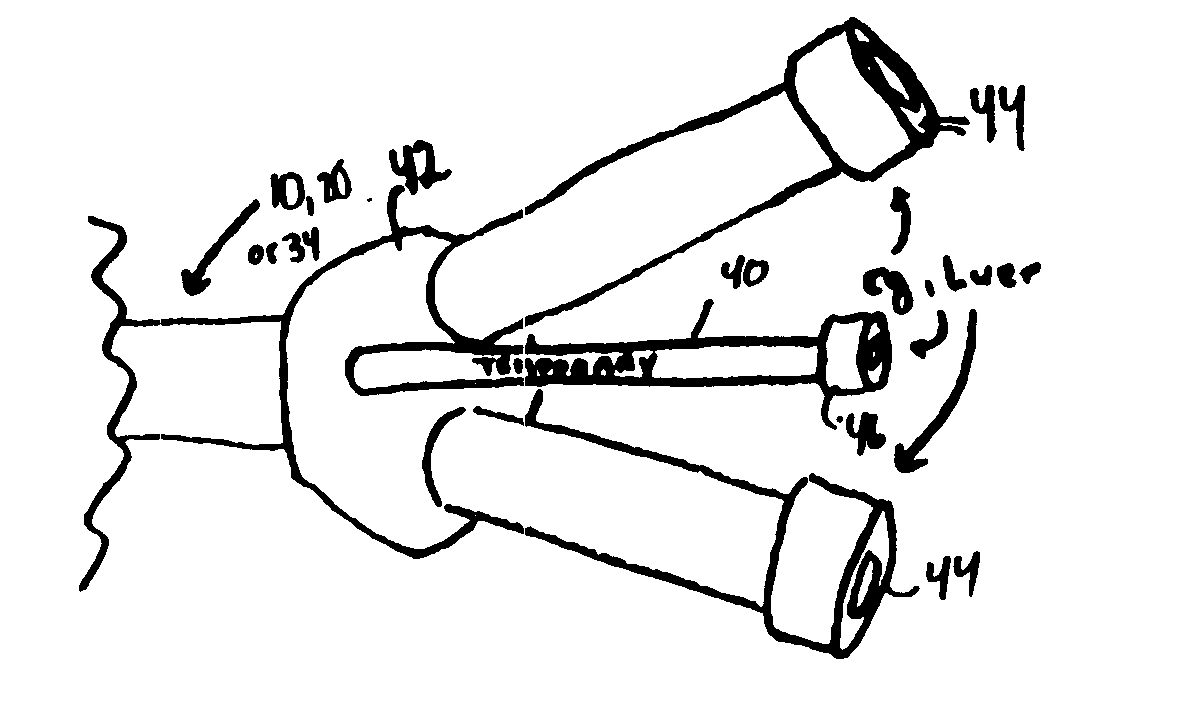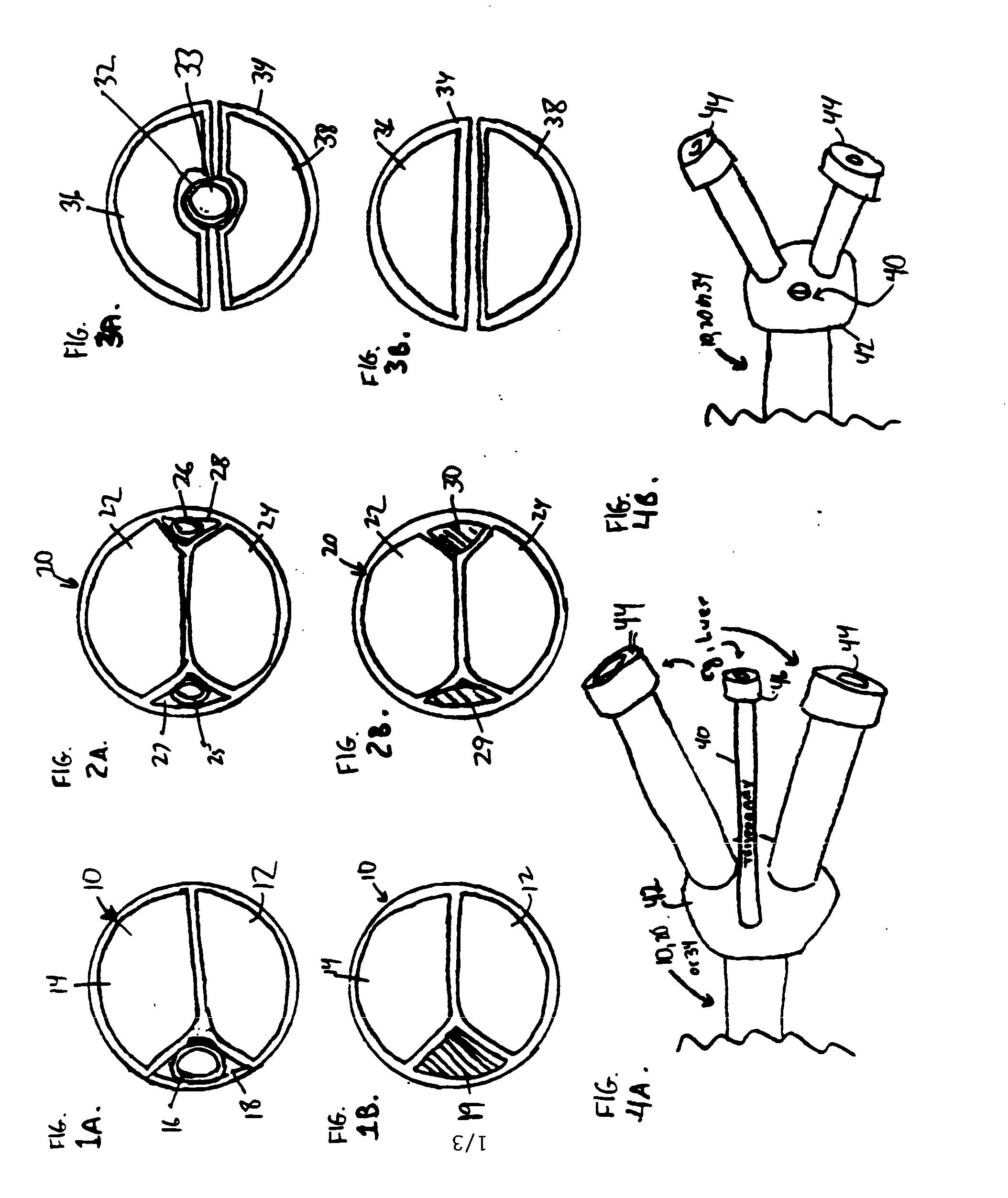Convertible multi-lumen catheter
a multi-lumen catheter and catheter technology, applied in the field of multi-lumen catheters, can solve the problems of significant morbidity and mortality in patients receiving such devices, increased risk of infection, and different patient needs, and achieves sufficient stiffness, prolonging the length of the lumen, and minimizing the risk of infection
- Summary
- Abstract
- Description
- Claims
- Application Information
AI Technical Summary
Benefits of technology
Problems solved by technology
Method used
Image
Examples
Embodiment Construction
[0025] A detailed description of exemplary embodiments of the present invention will now be described with reference to FIGS. 1-8. Although this description provides detailed examples of possible implementations of the present invention, it should be noted that these details are intended to be exemplary and in no way delimit the scope of the invention.
[0026] Several possible embodiments of a convertible multi-lumen catheter in accordance with the invention are shown in the figures. For example, FIGS. 1(A) and 1(B) illustrate a cross-section of a three lumen catheter 10 including two fixed lumens 12, 14 and a guide wire 16 in a third lumen 18 (FIG. 1(A)). As shown in FIG. 1(B), dead space 19 remains in the catheter 10 when the guide wire is removed from the third lumen. Similarly, FIGS. 2(A) and 2(B) illustrate a cross-section of a four lumen catheter 20 including two fixed lumens 22, 24 with guide wires 25, 26 in the third and fourth lumens 27, 28, respectively. As shown in FIG. 2(...
PUM
 Login to View More
Login to View More Abstract
Description
Claims
Application Information
 Login to View More
Login to View More - R&D
- Intellectual Property
- Life Sciences
- Materials
- Tech Scout
- Unparalleled Data Quality
- Higher Quality Content
- 60% Fewer Hallucinations
Browse by: Latest US Patents, China's latest patents, Technical Efficacy Thesaurus, Application Domain, Technology Topic, Popular Technical Reports.
© 2025 PatSnap. All rights reserved.Legal|Privacy policy|Modern Slavery Act Transparency Statement|Sitemap|About US| Contact US: help@patsnap.com



